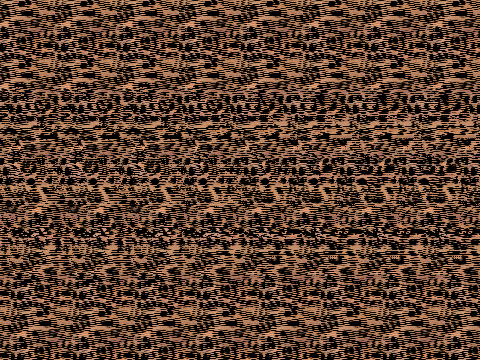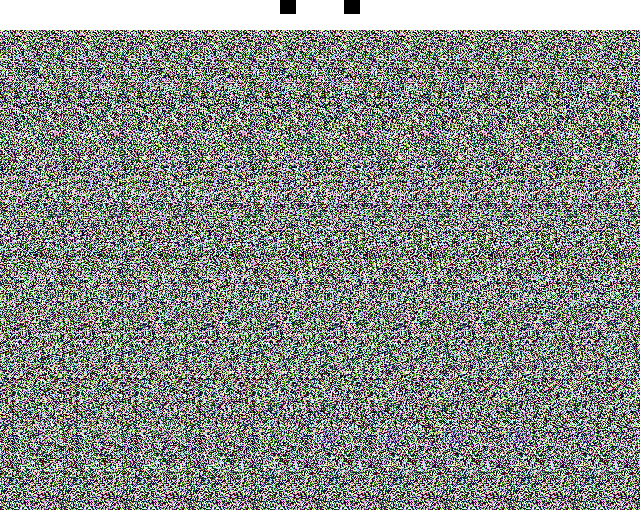

- #Make a stereogram generator#
- #Make a stereogram software#
- #Make a stereogram code#
- #Make a stereogram series#
- #Make a stereogram tv#
If you're feeling really adventurous, you can simply try to paint your own by hand. The best thing to do is to do a search for "depth map " in your search engine of choice. Rendering out a depth map gets a little bit complicated. We combine this with a random repeating pattern, and get a stereoscopic magic-eye type picture. This is a black and white image, where a 3D model is colored from white to black depending on its distance from the camera (eg: black is farthest point from the camera, white is the closest. Save and publish, done!įor these we need something a little bit more special, called a depth map. Photoshop (or any image editing package which lets you align 2 images).Īlign two images side by side, the left eye view on the left and right eye view on the right.

You don't really need a tutorial for this one right? Your process will look something like this: On the left eye, set your blending mode to screen. Get rid of the red channel (to get cyan) in the right eye (go to the channels window and fill the red channel with black). Get rid of everything but the red channel in the left eye (go to channels window and fill both the blue and green channels with black). Open your two images in Photoshop, and place the left eye in a layer on top of the right eye. Photoshop (or follow along in your own digital art package). a pair of stereoscopic photos (if you haven't got your own, you can use this left eye image and right eye image to follow along. To make things easier, we'll just talk about the main colours, Red/Cyan, in this tutorial, which is what you'd be using 99% of the time anyway. You can check out other combinations here. In actual fact, many color combinations will work, it's just most people won't have glasses that can see them. Most people associate anaglyph with Red/Cyan glasses which have a red lens covering the left eye, and a cyan (a kind of bright bluey-green) lens covering the right eye.
#Make a stereogram tv#
The reason it's still quite popular is because you don't need a special monitor or TV to view it, the glasses are quite cheap, and most people have access to a pair somewhere.Īnaglyph glasses come with lenses in a wide variety of colors. Think carefully about the type of stereogram you want to make, and follow the instructions below:Īnaglyph is the method of viewing stereoscopic images using those funny colored glasses. Some of his experiments work better than others.Have you checked out our tutorial for taking your own stereo photo? What about a stereogram that’s also an optical illusion ?
#Make a stereogram code#
He has around 75 of them, and they all stem from different ideas he wanted to try, like:Ĭan you make a stereogram that includes lighting effects ?Ĭould you take a photo that’s a stereogram?Ĭould you make a stereogram that’s also a valid QR code ?
#Make a stereogram series#
Scott has created a series of stereogram experiments exploring some very clever ideas.
#Make a stereogram generator#
If you have a long memory of internet history, you might recall Scott Pakin from his automatic complaint-letter generator that went viral in the late ‘90s and became famous enough to merit its own Wikipedia entry. Now I’m getting to the real subject of this week’s newsletter. I enjoy seeing what people come up with, and new techniques for making even sharper images that pop off the page or screen.Īnd that’s where I discovered the stereogram work of a computer scientist named Scott Pakin based in Los Alamos. It was the first time I’d ever seen a stereogram outside my bunk bed:Īnd of course there’s also a subreddit for stereogram fans where people share new experiments along with old favorites from the stereogram heyday.
#Make a stereogram software#
I was in high school reading OMNI magazine (add that to my nerd cred), and I came across this article about a man named Dan Dyckman who developed software to make your own single image random dot stereograms. It was a very basic 3D stereogram.įast forward several years to November, 1991. I used to reach up and try to touch them, and the illusion would break as my fingers passed through them. Where the holes in the board weren’t completely aligned, some dots floated closer to me than the rest. I found that I could see the pattern clearly even though my eyes were focused on a different plane, and the dots appeared to float in space between me and the top bunk.

The views from my eyes would diverge, causing double vision, until the pattern of holes overlapped again. As I lay in bed staring up at those dots, I’d let my eyes relax. The wood panels that supported the top mattress had a grid of holes like peg board. I used to sleep on the bottom bunk of a bed, and would stare up at the underside of the top bunk. But I accidentally discovered stereograms on my own as a little kid right around the same time. Stereograms were invented by a neuroscientist named Christopher Tyler in 1979.


 0 kommentar(er)
0 kommentar(er)
